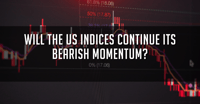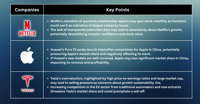At a cursory glance, the current landscape appears overwhelmingly optimistic. The Federal Reserve's near culmination of its interest rate hiking cycle, decelerating inflation, and earnings surpassing projections paint a favourable picture. However, the subdued enthusiasm among risk assets, notably US stocks, raises a perplexing question: Why is the buoyancy missing?
Let's dissect the earnings narrative initially. As the second-quarter earnings season winds down, US corporations have outperformed analysts' predictions at an elevated rate. Among the approximately 90% of S&P 500 companies that have disclosed results, an impressive 79% have exceeded analyst expectations—slightly surpassing the five-year average of 77%.
Oddly enough, investors are not rewarding these positive earnings revelations as one might anticipate. Companies that outshine predictions have witnessed only a marginal 0.5% increase in share value, contrasted with a ten-year average surge of 1.6% in the trading session after the earnings report. Strikingly, investors have exhibited heightened reprimand towards firms that miss or merely meet earnings forecasts, an inclination exceeding the norm.
This tepid market reaction to earnings announcements has substantially contributed to the current pause in this year's stock-market surge. August has witnessed the S&P 500 slide by 2.7%. Despite this downward blip, stocks have maintained their upward trajectory throughout the year, even as some of the largest US corporations reported a third consecutive quarter of declining profits. Bullish market proponents have built their case upon data suggesting a resilient economy and an optimistic outlook surrounding the Federal Reserve's intention to conclude its forceful campaign of interest rate hikes, an endeavour that had cast a shadow over stocks in the year 2022.
Nonetheless, a sense of unease permeates among short sellers. Historical analysis indicates that stocks currently appear pricey, amplifying concerns that earnings may further erode as the reverberations of the Fed's rate increases gradually infiltrate the economic landscape. Elevated bond yields have rendered risk assets, including stocks, less appealing in comparison. Furthermore, a subset of investors anticipates the impending arrival of a recession, potentially striking later this year or in the early months of the next.
Unveiling one of the key rationales behind the underwhelming enthusiasm in response to earnings figures: Companies have been confronting a relatively modest hurdle about profit expectations, thus tempering the magnitude of an earnings beat in the eyes of some investors. As the preceding year ended, analysts foresaw a slight dip of less than 1% in the 2023 second-quarter earnings of S&P 500 entities compared to the previous year. However, this outlook shifted significantly as the reporting season approached, with Wall Street revising its projections to approximately a 7% decline. Ultimately, earnings did encounter a dip of about 6%.
Hence, the robust earnings performances witnessed came from adjusted expectations from the outset. Notably, Wall Street analysts have further curtailed their earnings anticipations for the latter half of the year. Data-driven insights suggest that earnings are projected to remain relatively flat in the third quarter, only to surge by over 7% in the final quarter. Considering these intricate dynamics, the prevailing sentiment necessitates a judicious approach towards stocks at the current juncture.
Fullerton Markets Research Team
Your Committed Trading Partner














